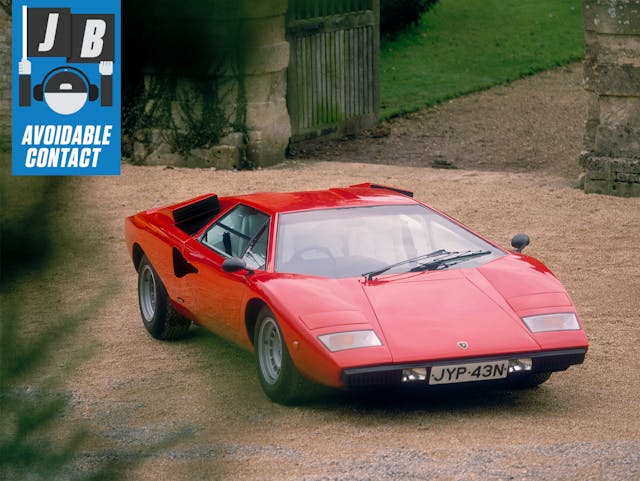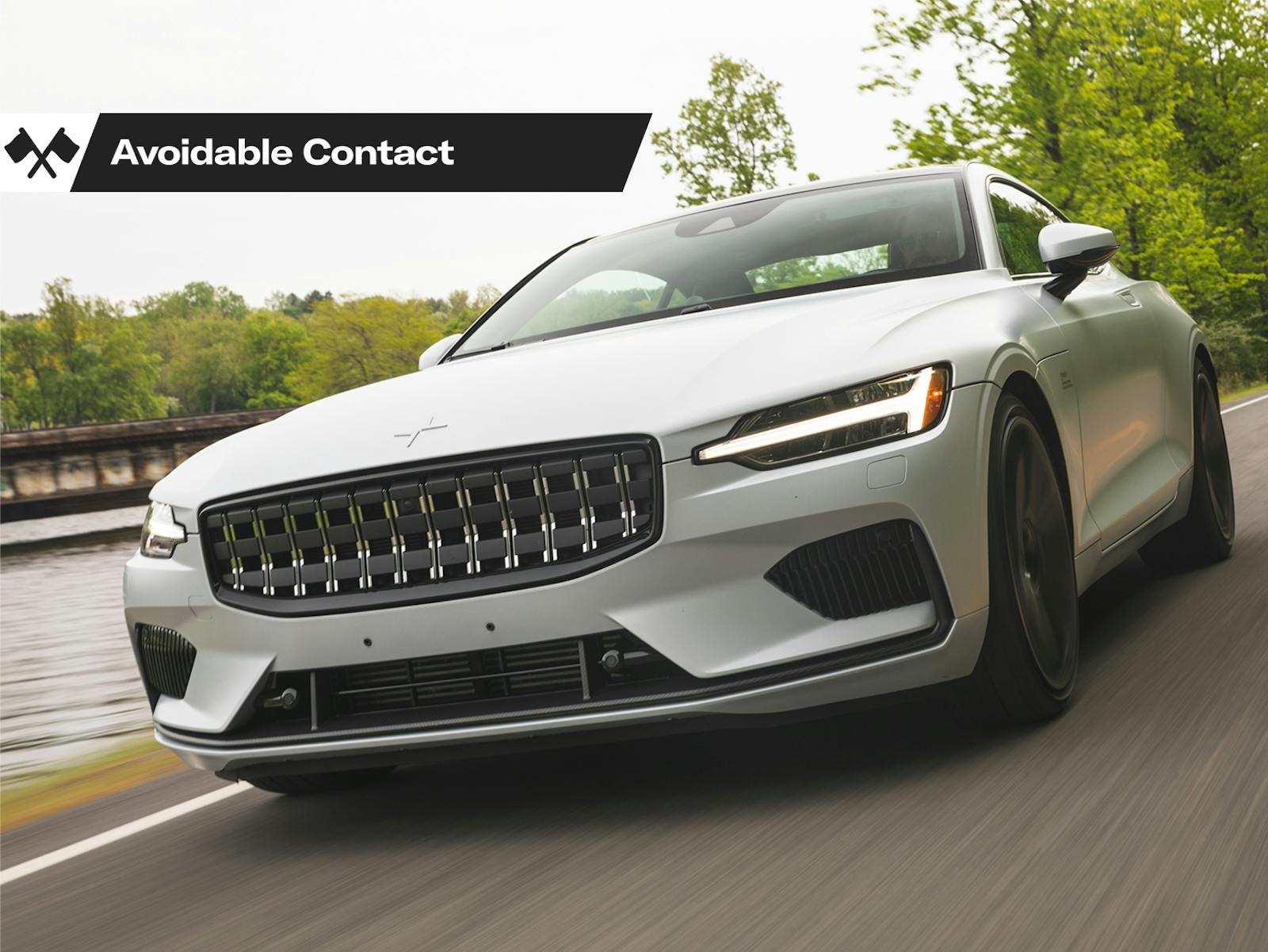Avoidable Contact #88: It was easy to love exotics when we didn’t know who was driving them

“No man is a hero to his valet.” This proverb is older than its most common attribution and is likely as old as the profession of valet itself. It should go without saying that I’m speaking here of “valet” in the traditional sense, that of gentleman’s assistant; the equivalent profession in the military was long known as “batman,” after a long-obsolete usage of “bat” to mean “pack” or “luggage.” I am not referring to “valet” in the modern sense of “someone who burns your clutch, scrapes your door, collapses your left seat bolster, then expects to be handsomely paid for doing so.”
Hold up, wait a minute—maybe that is who I mean.
For better or worse, the 21st Century has been The Age Of The Exotic Car. Never before have so many Lamborghinis, McLarens, Bugattis, et alia been sold to so many different people in so many different countries. While watching the recent Ford v. Ferrari snooze-fest of a movie, I was struck by how absurd the idea of Ford buying Ferrari must be to younger automotive enthusiasts. In 2021, Ferrari’s market cap is 130 percent of Ford’s. More importantly, Ferrari’s future (as purveyor of Veblen goods to a status-obsessed international audience) is absolutely assured, while Ford’s will be a nightmare tightrope walk between the illogical, feels-driven demands of power-drunk legislative lizard people and the vanishing purchasing ability of the now mostly mythical middle class.
(Save your complaints about my personal opinion of F v F. You know I’m right. The last time there was a movie that made something so intrinsically exciting and dangerous look that boring, it starred Elizabeth Berkeley and Kyle MacLachlan.)
There are a few reasons for this exotic explosion. The first is that there are more legitimate customers for such vehicles than ever before, due to economic circumstances which have greatly empowered the, ahem, one percent of the one percent and have also allowed an unprecedented concentration of personal wealth. We have more regions with an exotic appetite, as well. The Chinese market is now the primary focus of many upscale automakers; practically speaking, it didn’t exist thirty years ago. The relative price of these vehicles has also dropped, at least when compared against the average wealth of the world’s biggest players. There’s no easy way to quantify or measure this, but I would guesstimate that the potential buyer pool for today’s Rolls-Royce Wraith is something like ten times as large as the one for the Camargue was in the ’70s.
The second reason? Why, it’s the cars themselves, in particular their usability. Today’s LaFerrari or Veneno can be driven over potholed roads to the grocery store, or idled in a McDonald’s line for twenty minutes, without complaint. It starts and runs in all weather conditions, even if it’s been sitting for weeks. It will let you know when it needs service, and it will let the tech know what that service should be. If you accidentally press the accelerator too hard while pulling out onto a roadway, it will not loop out then fire you nose-first into a ditch. It has traction control, stability control, anti-lock brakes, and every other safety feature. It will pair with your Bluetooth phone and read you the stock quotes. In most cases, if you get a flat tire you can just drive on said tire all the way to the dealership.
Virtually none of this was true of, say, a carbureted Berlinetta Boxer. Even the non-performance exotics of 1980, like the aforementioned Camargue, were fantastically fussy and draining to operate. There was a reason for that: they were developed and built in-house by tiny teams of people who usually had no subcontractors besides Pressed Steel, Pininfarina, or Lucas. Heck, the same caveats applied to cars that were less than exotic, but merely expensive. When my father took delivery of a Jaguar XJ6 in 1986—and this was supposedly the “good one,” the Series III, built with fuel injection under John Egan’s leadership—he wound up having it pulled out of his garage so often that the local tow truck guy became an expert on the procedure.
Today’s megabuck cars are usually backed by major corporations and supported by crack Tier 1 suppliers. The magic of the Lotus Evora 400 isn’t that it looks different from, or goes a little faster than, the previous Evora S, but rather that the majority of the electronics have been supplied by automotive giant Continental Teves. Today’s Lamborghinis work like Audis, for obvious reasons. The most genuinely exotic vehicle I have ever driven—Bufori’s “Geneva” super-sedan, hand-molded out of Kevlar in an unmarked warehouse outside Kuala Lumpur and fitted-out any way a customer could possibly imagine—uses the uConnect infotainment system.
You get the idea. Owning a supercar now is no tougher than owning a Corvette or Mustang. Today’s exotic vehicles have all the qualities of their everyday counterparts, plus they are cooler, faster, and more interesting. This doesn’t stop people from crashing them, of course, but it removes the intimidation factor experienced by, say, the prospective owner of a Cizeta Moroder V16T. A few years ago, I agreed to sit in the passenger seat of a McLaren MP4-12C and train absolute novices to drive it around a race track, in the pouring rain, for a total of three days. I’m still very much alive, an outcome that would be difficult to envision if you replaced “McLaren MP4-12C” with “Ferrari F40” or even “Lamborghini Miura.”
All you need nowadays to be a supercar owner is money. No talent or skill required. Which is not to say that the people who daily-drove Countaches in 1986 were all like Gerhard Berger, but they at least had a fundamental acquaintance with vehicle dynamics and/or a strong sense of their own limitations. More importantly, they didn’t have YouTube or social media, so they remained largely mysterious to those of us in the cheap seats.
That mystery is all gone now. I’ll give you an example. As a teenager, I heard a lot of stories about a certain very fortunate young man whose father let him drive the family’s collection of exotic cars. I even saw him a few times, driving an F40 outside the Ohio State University campus on Friday or Saturday nights. There were all sorts of stories about him; he’d crashed the car drunk, he’d melted the Lexan cover over the engine chatting with girls, he had escaped the cops in a 150-mph chase.
(Twenty years later, I met the fellow in question and discovered that only the Lexan-engine-cover story was true.)
Today’s young supercar drivers aren’t figures of mystery or legend. They’re out there on YouTube, making idiots of themselves, acquainting the viewer with every aspect of their personal lives, discussing the frankly banal or disturbing ways in which they made or inherited their money, hustling for your eyeballs along with Mr. Beast and PewDiePie and all the other video clowns out there. Can you imagine being rich enough to own the exotic car of your choice but being so personally insecure that you insist on social-media omnipresence just for the validation of it all? I don’t play the lottery, but if someone ever gives me a winning ticket by accident I guarantee you’ll never hear my name again—outside of Radio IMSA, that is. “Well, it looks like Baruth has ripped the fenders off yet another DPi prototype in just the first hour of this twenty-four-hour race. It doesn’t look like he’s particularly worked-up about it. Hold on, it appears the medical car is bringing him a filet and shot of vodka.”
It’s not just the youngsters. Even the Exotic Boomers are on forums and social media, letting you know just how fundamentally unglamorous (and uninteresting) they so frequently are. As a kid, I could easily imagine that the Serengeti-Drivers-wearing fellow behind the wheel of the Porsche 965 Turbo next to me at a stoplight was going to hit 170 mph between here and a chalet filled with Playboy Bunnies. Today, thanks to Rennlist, I know that he is going to Whole Foods to get a certain kind of arugula described in exacting fashion ahead of time by an impatient, largely disinterested spouse, and that he is only driving the Turbo because his Lexus LX570, which he actually prefers, is being used by the au pair.
Oh, and he’s definitely getting PDK next time.
(Correction, courtesy of a reader: While air-cooled dirtbags such as yours truly often say “965” to refer to the 3.3 or 3.6-liter turbo 911 based on the 964, that’s a sloppy thing to do.)
The Internet has made the entire exotic-car world one long and fantastically depressing episode of the “Stars—They’re Just Like Us!” feature that used to do so well in Us Weekly. Except they’re not exactly like us. They’re richer, and louder, and often far less interested in the cars than we are. Was that the case in 1975? It probably was—but you didn’t have it shoved in your face all the time. You were free to imagine the lifestyle that surrounded the cars, free to allow the glamour of a Gandini shape to permeate everything it might touch.
For your humble author, at least, this omnipresence of exotic cars, overexposed by non-exotic people, is a significant disincentive to ownership. There’s probably a way for me to become a McLaren owner, if the McLaren in question has enough miles on it, particularly if I never bought another guitar or mountain bike, but I don’t necessarily have a great desire to affiliate myself with the Supercar YouTubers of the world, or to be mistaken for one of them. If I ever buy a McLaren, it will probably be one that has a rollcage instead of a Montana title. I love the cars, but I don’t love the aura that surrounds them nowadays.
On the other hand, I would still very much like to buy one of those last turbocharged Silver Spurs from 1995 or 1996. It has no social media appeal, no owners with big balloon-letter captions on YouTube: “I DROVE MY SILVER SPUR TO A WAFFLE HOUSE AND BOUGHT ALL THE BACON THEY HAD LEFT ON THE GRIDDLE! LIKE AND SUBSCRIBE!” In a world where every fourteen-year-old can distinguish a 458 Speciale from a 488 Pista based on a blurry GoPro shot of the floorboards, the old Crewe-built Rolls-Royces are still utterly anonymous. Unfamiliar. And that’s good, because as we’ve seen above, familiarity breeds contempt.
No, I won’t get my old Royce parked in front of the steakhouse, any more I would with my 1986 Mercury Grand Marquis (about which more will be said, and soon), but that’s okay. I’m not in this game to impress the valets, or to be their hero. Which you can’t do with a Ferrari anyway. If you want to be a hero to your valet, try giving him a hundred bucks to park a cologne-free car. It really is that simple. I promise.

